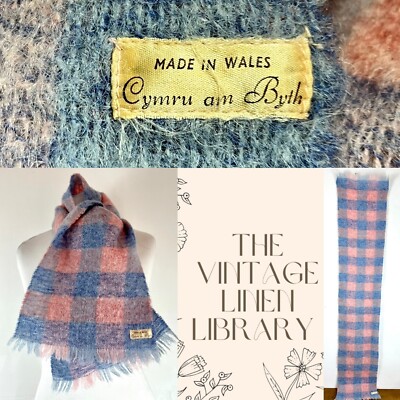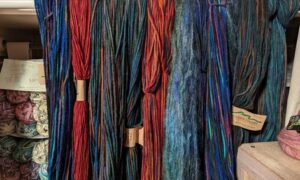Can You Combine Linen, Gingham, and Mohair Fabrics in One Garment?
Creating garments with a mix of fabrics can elevate your fashion game, but understanding fabric compatibility is crucial. Linen, gingham, and mohair each have unique qualities, and this article will explore whether these fabrics can work harmoniously together in one garment. You’ll learn about their compatibility, benefits, challenges, and practical sewing tips for successful fabric mixing.
Compatibility Analysis
Yes, you can combine linen, gingham, and mohair in one garment, though it requires careful consideration. The key factors influencing their compatibility include texture, weight, stretch, care requirements, and durability. Linen is a lightweight, breathable fabric with a slightly rough texture. Gingham, often made from cotton, is also lightweight and breathable, but it offers a structured look with its distinctive checkered pattern. Mohair, derived from the Angora goat, is soft, warm, and slightly stretchy, adding a luxurious touch to any garment.
Key Factors:
- Texture: Linen and gingham provide a crisp, clean finish, while mohair adds softness and warmth.
- Weight: Linen and gingham are similar in weight, making them easy to pair. Mohair can vary but often complements the others when used as an accent.
- Stretch: Mohair offers more stretch, so it’s ideal for areas needing flexibility.
- Care Requirements: Linen and gingham are relatively easy to care for, while mohair requires more delicate handling.
- Durability: All three fabrics are durable but handle wear differently; combining them requires mindful care.
Fabric Properties Comparison Table
| Property | Linen | Gingham | Mohair |
|---|---|---|---|
| Fiber Content | Natural (flax) | Natural (cotton) | Natural (Angora goat) |
| Weight and Thickness | Lightweight | Lightweight | Varies (light to medium) |
| Breathability | High | High | Moderate |
| Stretch and Elasticity | Low | Low | Moderate |
| Wrinkle Resistance | Low | Low | Moderate |
| Care Instructions | Cool wash, iron | Cool wash, iron | Dry clean, air dry |
| Durability | High | High | Moderate to high |
Benefits of Mixing These Fabrics
Combining linen, gingham, and mohair can create garments with enhanced texture and visual interest. The mixture improves comfort and performance, offering better drape and movement. This combination is cost-effective and provides seasonal versatility, suitable for both warm and cool weather. The design possibilities are endless, allowing for creative expression in both fashion and home decor.
Potential Challenges
Despite the benefits, mixing these fabrics presents challenges. Different shrinkage rates can distort the garment’s shape, while conflicting care requirements may complicate maintenance. Texture clash or pilling could occur, and seam puckering might affect the finish. Color bleeding or fading is another concern. Practical solutions include pre-washing fabrics to minimize shrinkage, using stabilizers, and selecting compatible colors.
Sewing & Styling Tips
When sewing these fabrics together, use a universal needle size 70/10 or 80/12, and choose a polyester thread for strength. Consider using fusible interfacing to stabilize areas prone to stretching. For seam finishing, French seams or serged edges work well. Choose patterns that highlight the unique qualities of each fabric, such as a gingham bodice with mohair sleeves and a linen skirt. Styling ideas include layering for texture or incorporating contrasting patterns for visual interest.
Care & Maintenance Guide
To care for a garment made from these fabrics, wash linen and gingham in cool water and air dry. Mohair should be dry-cleaned or gently hand-washed. Iron linen and gingham on a low setting, and steam mohair to avoid flattening its fibers. For stain removal, treat each fabric according to its specific needs, and ensure long-term care by storing garments properly to prevent damage.
FAQ Section
-
Can you wash linen and gingham together?
Yes, both can be washed in cool water, but check for colorfastness first. -
Will mohair shrink more than linen or gingham?
Mohair may shrink if not handled properly, so dry cleaning is recommended. -
What needle size should I use for sewing these fabrics together?
A universal needle size 70/10 or 80/12 is suitable. -
Can you mix mohair and gingham in one garment?
Yes, using mohair as an accent can add warmth and texture. -
How do you prevent seam puckering when combining these fabrics?
Use a walking foot and adjust tension settings on your sewing machine. -
Is it okay to mix these fabrics for upholstery?
While possible, consider the wear and care requirements of each fabric. -
What’s the best way to finish seams with these fabrics?
French seams or serged edges provide a clean, durable finish.
By understanding the properties and compatibility of linen, gingham, and mohair, you can create beautiful, functional garments that showcase the best of each fabric. With careful planning and execution, the possibilities for fabric pairing are endless.


Leave a Reply